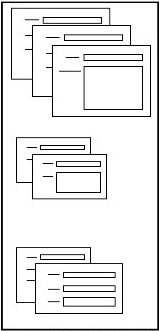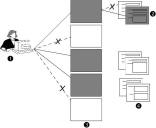Publishing windows
A window view can contain many different window designs for each of the different business objects, and you can specify which window is displayed from the view depending upon the current process, action or create state. For example, you could create a view with a different Incident window for each Incident process you have, or different windows for creating and updating Changes.
There are two stages to determining which window appears when you use window views:
- Firstly, View Selection Rules determine which of your views is used based on the type of client being used, the user's role and current group, the user type for the user, and the specific user name
- Secondly, Window Selection Rules determine which window from the selected view is used based on the process being used, the action selected, and whether a record is being created or updated

|
Different Incident windows in a View
|
|
Different Incident Note windows in a View |
|
|
Different Problem windows in a View |
|
|
...and so on for windows for other business objects |
|
|
A View defines which specific window for a business object is deployed depending on the current process, action, create state, or application. |
The system determines which of the views are available to you based on your user name, roles, user type, current group, and the current client type (for example, whether you have logged in using Console, Self Service, or Web Desk). You can create a set of rules that prioritizes this list: these rules are called the View Selection Rules.
The system works its way down this list of View Selection Rules until it finds a set of criteria that match the user. This then defines which view is used. The specific window to use from the view is then determined by considering the current process, action or create state: these are the Window Selection Rules. If there is no window in the view that matches the required Window Selection Rules, the next view in the list is used, until a window that matches all of the criteria is found: both the login criteria that select the view and the process criteria that select the specific window from the view. If no matches are found, the default view is used. If no matches are found in the default view, then the default window for that business object is used.
1 – The user's current group, assigned roles, user type, and the type of client they have logged in using determine which of the defined views are available to them.
2 – When the view has been selected, the specific window in the view is determined based on the current process, action or create state.
3 – Prioritized list of matching views.
4 – Different windows in each view.
Changing your current group can change the window that is displayed.
